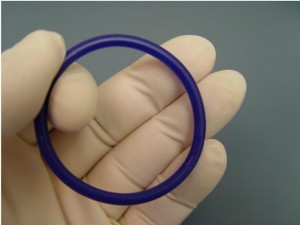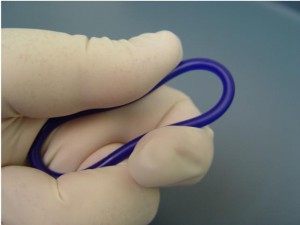The contraceptive ring is a soft, plastic ring that is worn in the vagina, where it slowly releases it’s active ingredients, etonogestrel and ethinyl estradiol, at an average rate of 0.120 mg and 0.015 mg per day.
The patient reacts as though she were taking oral contraceptive pills.

Each ring lasts one week. The ring is used for 3 consecutive weeks (3 weeks “on”) and then not used for one week (1 week “off”). The patient’s normal menstrual flow occurs during the “off” week.
The risks and benefits are essentially the same as for OCPs, and the effectiveness is between 98% and 99%. This is nearly as effective as OCPs, and comparable to the effectiveness of an IUD or condoms.
The ring remains in place during intercourse. Most women and their partners are not conscious of the ring being present. For those who do notice it, most are not bothered by its presence.

If the ring should come out of the vagina, it should be re-inserted within 3 hours, after rinsing it off with cool or luke-warm water. If it remains out of the vagina for more than 3 hours, it can still be re-inserted, but backup contraception should be used for 7 days following re-insertion.
Starting the Ring
Insert the first ring within 5 days of the beginning of the menstrual flow. Use backup contraception for the first 7 days following insertion.
Changing from OCPs to the Ring
- At the normal time for starting a new pack of pills, insert the ring.
Starting the ring after a 1st trimester miscarriage
- Insert the ring within 5 days of the miscarriage (spontaneous abortion or induced abortion). No backup contraception is needed.
Starting the ring after a 2nd or 3rd trimester delivery
- Insert the ring 4 weeks after delivery (for those not breastfeeding).
Breastfeeding and the Ring
The ring manufacturer recommends that the ring not be used while breastfeeding, based on absence of scientific studies examining the effect of these hormones on the newborn.
Many physicians, however, routinely use oral contraceptive pills in breastfeeding women, and the American Academy of Pediatricians has declared breastfeeding and the concurrent use of oral contraceptive pills to be compatible. It is unlikely that the ring’s hormonal properties are so much different from the OCPs properties as to place it in a different category
